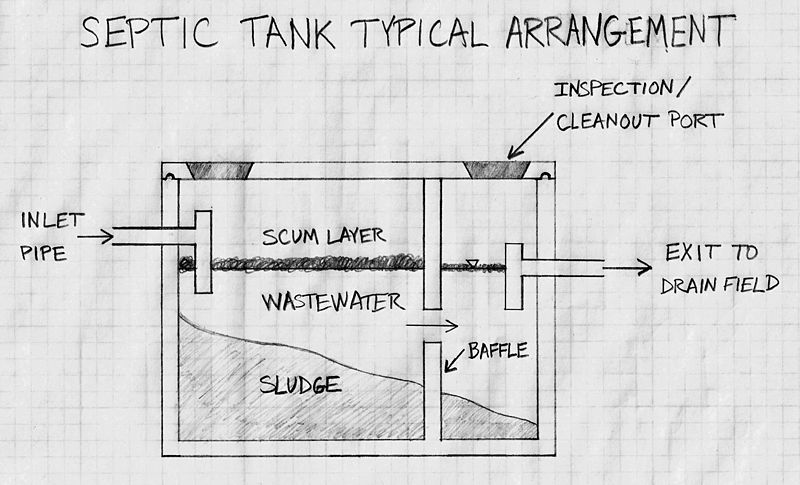How to find septic tank records
Septic tanks need to be pumped on a regular basis. Otherwise, your home’s wastewater treatment may fail to do its job properly, leading to serious issues like wastewater backing up. But how can you take good care of your septic tank if you do not even know where it is located? Well, locating a septic tank is not a difficult thing, especially if you have a septic tank record.
So, how to find septic tank records? You should contact your local county office since it is the likeliest place for finding a record of your septic tank. If you are buying a new home, perhaps the existing owner has a septic tank record, which will show you the exact location of the tank.
Call Septic Service Pros 1.855-925-0760 For Service or Request a Quote
Rather watch a Video? Here you go…
How to find where your septic tank is located?
Having a hard time locating your septic tank? Then follow along as we discuss some simple yet practical methods for finding your septic tank.
- Consult a Septic Tank Map or Diagram
Without a doubt, this is the simplest and the easiest way of finding a septic tank. A septic tank map or diagram will show the exact location of both the drain field and the septic tank.
Have you recently bought a house? If so, the septic tank diagram or map will likely be included with the house plan.
If the map is not included, perhaps you can get it from the local health department. Generally, local health departments maintain septic system records on file. Alternately, you can contact the local municipality, which might have a property survey map on file that may show you the exact place on your property where the tank is located.
- Follow Sewer Outlet Pipes
Another simple way is to follow the sewer outlet pipes which come of your house and goes into the yard. The first thing you must do is locate the main outlet pipe. It is about 4-inch in diameter and is generally found in the basement.
Once you have located the outlet pipe, take note of the area where it exits the wall. Next, go outside to the place where it exits into your yard. Now, you can use a probe, such as a thin metal stake, and, following the pipeline, probe the ground soil every couple of feet.
Generally speaking, a septic tank is situated within 12 to 30 feet from the house. When the metal stake hits a flat fiberglass, concrete, or polythene surface, you can be sure that you have located the tank.
Call Septic Service Pros 1.855-925-0760 For Service or Request a Quote
- Search your yard
A little bit of sleuth work and preservation can easily help you locate your septic tank. Even though septic tanks are invariably installed in a manner that makes them inconspicuous instead of glaringly obvious, some tell tale signs regarding their location, especially if they have been installed not a long time back, do exist.
Start with eliminating areas where a septic tank cannot be. Septic tanks are almost always at least three feet from the house, so you can easily rule out the area close to your home. You can also write off driveway and other paved surfaces as a possible location, because septic tanks are usually never installed under a paved or concrete surface. If you have a well in your yard, the tank is not likely to be in the area next to it.
Once you have ruled out areas where the tank is not likely be present, you can began your search by looking for either an out-of-place green patch or a patchy area amid lush green growth.
A patch of lush green growth might be due to water and nutrient supplied by effluent from the leach field, and hence can be an indication of a nearby septic tank.
But keep in mind that if your septic tank is installed just below the ground surface, you will likely see a patchy area rather than an area of lush green growth. That is because, when a tank is installed just below the surface, the soil between the two is shallow, which is not conducive for grass growth. So, if you notice a patchy area amidst lush green grass, it may be a sign that a septic tank is close by.
How can I find whether my septic tank is registered?
The easiest way to do this is by getting in touch with the local environmental regulator. The person in charge can tell you if your septic system is registered, but be aware you may have to pay a fee for the information.
Where it is possible to find a sketch of my septic system?
While there is a definite answer to this question, the basement wall is a good place to start your search. Don’t ignore the crawl space foundation wall or floor that is above where the sewer line exits your home through the foundation wall.
What is the simplest way to find a septic system in an old house?
First, locate the 4-inch sewer line that exits the foundation wall and locate this very same line outside your building. In most cases, septic tanks are installed roughly 10 to 25 feet away from a place of residence. Using a thin metal stick, probe the ground every 2-3 feet, until it strikes concrete, fiberglass, or polyethylene.
Can one use a metal detector to locate a septic tank?
Yes, of course. You can use a metal detector for locating your septic tank. Some septic tanks are buried deeper than others. If your septic tank is buried more than 4 feet, you will not likely be able to detect it using a metal probe. On the other hand, a metal detector can easily locate a deeply-buried septic tank.
Will my local county have a record of my septic tank’s location?
There’s is a very good chance that your local county has a record of where your tank is located. Since the location of a septic tank can have a huge impact on water sources close by, an installer needs to apply for a permit before a new tank can be installed. Much thanks to this, your local county should possess a record of where your tank is located.
If you received this record at the time of home purchase, review the diagram for determining the tank’s size and the total number of its lids. Equipped with this information, you may be easily able to locate your septic tank.
Keep in mind that if your septic tank predates permit requirements, your local county office may not have its records. But that does not mean all your hopes of locating your tank are dashed. Registered or not, septic tanks need to be regularly pumped, once every 2-3 years. So, it would be a good idea to contact local septic tank cleaners and ask them if they have ever serviced your septic tank and, if so, do they remember its exact location.










